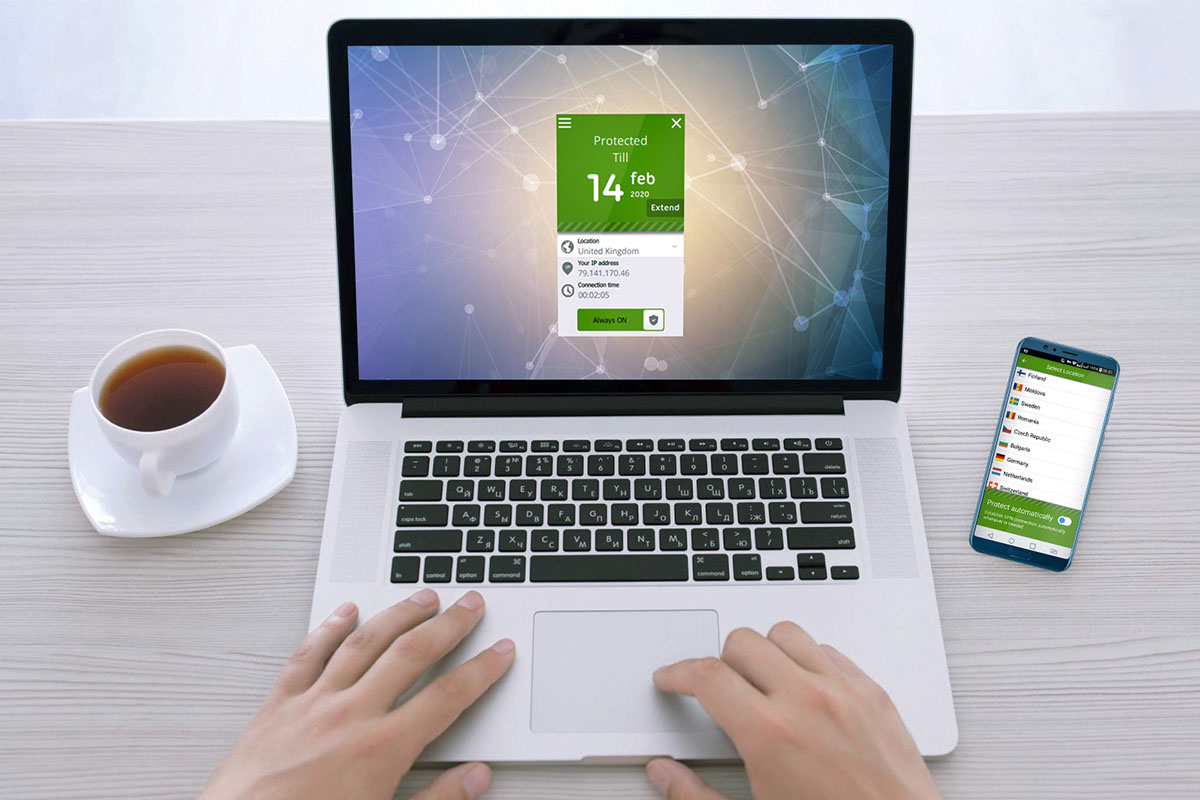Xiaomi is well known for its smartphones that offer great value, but at the company’s “2021 New Product Launch” today, they dedicated a good portion of the event to premium flagship devices. However, the company hasn’t forgotten what’s behind its success, so alongside the new Mi Mix Fold, Mi 11 Ultra, and Mi 11 Pro, Xiaomi is taking the wraps off the new Mi 11 Lite series.
Xiaomi’s Mi series comes in many different configurations, though the more premium models always tend to launch a few weeks or months before the “Lite” ones. Today’s launch of the Mi 11 Lite series comes nearly 3 months after the launch of the regular Mi 11, a phone we said offers excellent bang for the buck. At a starting price of €649, though, the standard Mi 11 may be too expensive for many, which brings us to the two phones in the Mi 11 Lite series.
In Europe, you’ll be able to pick up the Mi 11 Lite 4G or the Mi 11 Lite 5G. Both phones look very similar on the outside and even share many of the same specifications, with the biggest difference obviously being support for 5G connectivity in the latter model.
Xiaomi Mi 11 Lite Series: Design, Specs, and Features
One of the first things you’ll notice about both phones in the Mi 11 series is how incredibly thin they are. Both phones are just 6.81mm thick, which is impressively thin compared to most flagships on the market. They’re also both impressively lightweight, with the 4G model weighing just 157g and the 5G model just 159g. For comparison, the new Mi 11 Ultra with its massive camera bump is 8.38mm thick and weighs 234g. Both phones also have flat displays, a single hole-punch cutout in the top-left of the display, and triple rear cameras housed in a square camera bump. Both phones also have dual stereo speakers, a USB Type-C port, a dual SIM card tray, and a fingerprint scanner integrated into the power button.
Xiaomi is selling the Mi 11 Lite 4G in three colors: Boba Black, Bubblegum Blue, and Peach Pink. You can see the Bubblegum Blue and Peach Pink colors below.

Xiaomi Mi 11 Lite 4G
The Xiaomi Mi 11 Lite 5G will also come in three colorways, including Truffle Black, Mint Green, and Citrus Yellow.



Apart from the different color choices, there’s only one other design difference: The display on the Mi 11 Lite 4G is protected by a layer of Corning’s Gorilla Glass 5, while the display on the 5G model is protected by a layer of Corning’s Gorilla Glass 6.
Xiaomi Mi 11 Lite 4G Forums ||| Xiaomi Mi 11 Lite 5G Forums
The phones are as similar internally as they are design-wise. Both the Mi 11 Lite 4G and 5G feature a 6.55-inch AMOLED display at Full HD+ resolution with a 90Hz refresh rate and 240Hz touch sampling rate, at least 6GB of LPDDR4X RAM, UFS 2.2 storage, a 4,250mAh battery with 33W fast charging support, NFC, and a Z-axis linear motor. The 5G model has a higher-resolution selfie camera (20MP versus 16MP) but offers the same triple camera setup as the 4G model, which consists of a main 64MP f/1.79 camera, an 8MP ultra wide-angle f/2.2 camera, and a 5MP “telemacro” f/2.4 camera.
As previously mentioned, the biggest difference between the two phones is evident from their names: connectivity. The Xiaomi Mi 11 Lite 4G is powered by Qualcomm’s Snapdragon 732G, a mid-range chipset featuring an integrated Snapdragon X15 4G LTE modem. On the other hand, the Xiaomi Mi 11 Lite 5G is the first to feature Qualcomm’s new Snapdragon 780G, an upper mid-range chipset with an integrated Snapdragon X53 5G modem. The Snapdragon 780G can also be paired with a Bluetooth 5.2 and Wi-Fi 6-compatible chipset, which is the case in the Mi 11 Lite 5G. Both the Snapdragon 732G and Snapdragon 780G feature octa-core CPUs, with the former having 2 ARM Cortex-A76 cores paired with 6 ARM Cortex-A55 cores and the latter having 4 ARM Cortex-A78 cores paired with 4 ARM Cortex-A55 cores. The Snapdragon 732G comes with Qualcomm’s Adreno 618 GPU, while the Snapdragon 780G comes with Qualcomm’s Adreno 642.
Thus, not only does the Mi 11 Lite 5G offer better connectivity, but it also has substantially faster CPU and GPU performance. Still, it’s good to see that Xiaomi is continuing to offer phones with 4G LTE connectivity, as many countries still lack mature 5G networks.
Software-wise, both phones run Xiaomi’s MIUI 12 release based on top of Android 11. Xiaomi says that the wide-angle camera and the front camera have been optimized for Night Mode and that there are new video modes and filters to use, such as AI Skyscaping 3.0. Other than that, the software experience should be very similar to Xiaomi’s other MIUI 12 devices.
| Specification |
Xiaomi Mi 11 Lite 4G |
Xiaomi Mi 11 Lite 5G |
| Build |
- Colors: Boba Black, Bubblegum Blue, Peach Pink
- Protection: Corning Gorilla Glass 5
|
- Colors: Truffle Black, Mint Green, Citrus Yellow
- Protection: Corning Gorilla Glass 6
|
| Dimensions & Weight |
160.53mm x 75.72mm x 6.81mm, 157g |
160.53mm x 75.72mm x 6.81mm, 159g |
| Display |
- 6.55” AMOLED DotDisplay (2400 x 1080 FHD+)
- 10-bit TrueColor and DCI-P3
- 90Hz refresh rate, 240Hz touch sampling rate
- HDR10 support
- TÜV Rheinland Low Blue Light Certification
|
- 6.55” AMOLED DotDisplay (2400 x 1080 FHD+)
- 10-bit TrueColor and DCI-P3
- 90Hz refresh rate, 240Hz touch sampling rate
- HDR10+ support
- TÜV Rheinland Low Blue Light Certification
|
| SoC |
- Qualcomm Snapdragon 732G
- CPU
- 1x ARM Cortex-A76 @ 2.3GHz
- 1x ARM Cortex-A76 @ 2.2GHz
- 6x ARM Cortex-A55 @ 1.8GHz
- GPU: Adreno 618
- Samsung’s 8nm LPP manufacturing process
- Xiaomi’s LiquidCool Technology
|
- Qualcomm Snapdragon 780G
- CPU
- 1x ARM Cortex-A78 @ 2.4GHz
- 3x ARM Cortex-A78 @ 2.2GHz
- 4x ARM Cortex-A55 @ 1.9GHz
- GPU: Adreno 642
- Samsung’s 5nm manufacturing process
- Xiaomi’s LiquidCool Technology
|
| RAM & Storage |
- 6GB LPDDR4X RAM + 64GB UFS 2.2 storage
- 6GB LPDDR4X RAM + 128GB UFS 2.2 storage
|
- 6GB LPDDR4X RAM + 128GB UFS 2.2 storage
- 8GB LPDDR4X RAM + 128GB UFS 2.2 storage
|
| Battery & Charging |
- 4,250mAh battery
- 33W fast-charging via included charger
|
- 4,250mAh battery
- 33W fast-charging via included charger
|
| Security |
Arc side-mounted fingerprint, PIN/Password, Pattern |
Arc side-mounted fingerprint, PIN/Password, Pattern |
| Rear Camera(s) |
- Main: 64MP (F/1.79, 0.7μm 4-in-1 to 1.4μm, 1/1.97″ sensor size, 6P lens, contrast autofocus)
- Ultra wide-angle camera: 8MP (F/2.2, 1.12μm, 1/4″ sensor size, 5P lens)
- Macro: 5MP telemacro camera (F/2.4, 1.12μm, 4P lens, contrast autofocus, 3-7cm)
- Single-tone flash
|
- Main: 64MP (F/1.79, 0.7μm 4-in-1 to 1.4μm, 1/1.97″ sensor size, 6P lens, contrast autofocus)
- Ultra wide-angle camera: 8MP (F/2.2, 1.12μm, 1/4″ sensor size, 5P lens)
- Macro: 5MP telemacro camera (F/2.4, 1.12μm, 1.5″ sensor size, 4P lens, contrast autofocus, 3-7cm)
- Single-tone flash
|
| Front Camera(s) |
16MP in-display selfie camera |
20MP in-display selfie camera |
| Port(s) |
USB Type-C |
USB Type-C |
| Audio & Vibration |
- Dual audio speakers
- 2x recording microphones
- Hi-res Audio certification, Hi-res Audio Wireless certification
- Z-axis linear motor
|
- Dual audio speakers
- Hi-res Audio certification, Hi-res Audio Wireless certification
- Z-axis linear motor
|
| Connectivity |
- Qualcomm Snapdragon X15 4G LTE integrated modem
- 4G LTE FDD: 1/2/3/4/5/7/8/12/17/20/28/32/66
- 4G LTE TDD: 38/40/41 (120M)
- 3G WCDMA: 1/2/4/5/8
- 4×4 MIMO (Only 4G, B3, B7)
- Dual SIM
- Bluetooth 5.1
- Wi-Fi 5
- NFC and IR blaster
|
- Qualcomm Snapdragon X53 4G LTE and 5G integrated modem
- 5G NR: n1/n3/n5/n7/n8/n20/n28/n38/n40/n41/n77/n78/n66
- 4G LTE FDD:1/2/3/4/5/6/7/8/12/13/17/20/28/32/66
- 4G LTE TDD: 38/40/41
- 3G WCDMA: 1/2/4/5/8
- 2G GSM: 2/3/5/8
- Dual 5G
- Bluetooth 5.2
- Wi-Fi 6
- NFC and IR blaster
|
| Software |
MIUI 12 based on Android 11 |
MIUI 12 based on Android 11 |
Pricing and Availability
The Mi 11 Lite 5G is sold in a 6GB + 128GB variant and an 8GB + 128GB variant and starts at ¥2299 in China and goes up to ¥2599. In Europe, the phone starts at €369.
The Mi 11 Lite 4G is sold in a 6GB + 64GB variant and a 6GB + 128GB variant and starts at €299.
The post Xiaomi unveils the Mi 11 Lite series with premium features at a lower price appeared first on xda-developers.
from xda-developers https://ift.tt/2PF8ro5
via
IFTTT









































